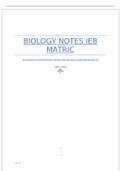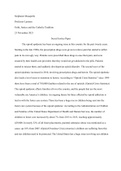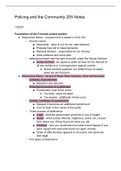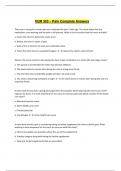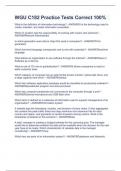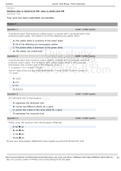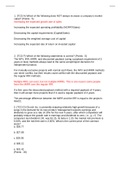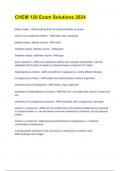Summary
IEB Biology Notes and Summary
- Course
- Life Sciences
- Institution
- 12th Grade
IEB Biology Notes and Summary. Content from Mind Action Series Life Sciences Grade 12 Textbook and Workbook. The entire book was summarized by an A-grade Student. Simple easy to understand notes which cover the entire IEB Matric Finals Syllabus. All content in the book is summarized and covered...
[Show more]
